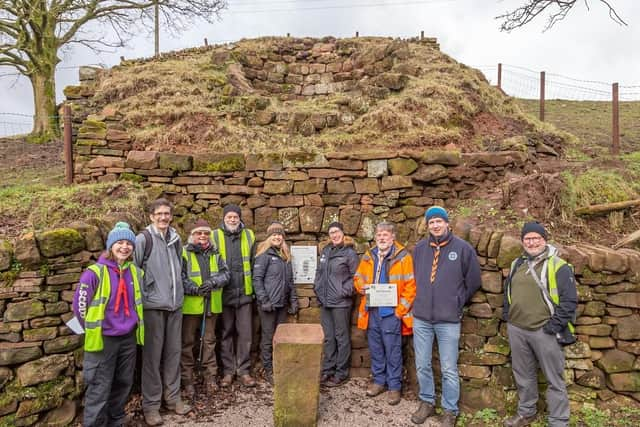High Peak scouts adopt Peak District heritage site to preserve it for future generations
and live on Freeview channel 276
The eight scout groups for Buxton, Chapel-en-le-Frith, Chinley, Hayfield and Whaley Bridge will be jointly responsible for conservation of the centuries-old limekiln close to their campsite in Gradbach, Quarnford.
The structure had been in a poor state of repair until last summer when volunteers from the South West Peak Landscape Partnership (SWPLP) spent a month rescuing it with support from the Association for Industrial Archaeology, National Lottery Heritage Fund and the Peak District National Park Authority. The scouts saw work in progress and became interested.
Advertisement
Hide AdAdvertisement
Hide AdPaul Taylor, leader of 3rd Buxton scouts in Harpur Hill, said: “We have been looking at limekilns around Buxton so the Gradbach limekiln extends our knowledge and area of interest. Taking part in activities to look after the site will help the scouts gain the Derbyshire archaeology badge.”


Paul Read, of Gradbach Scout Camp, added: “The scouts have been part of the local community in Gradbach for the past 68 years. It is nice to put something back and the adoption matches our aims of community service and involvement.”
There are many cultural heritage assets in the South West Peak, which are not scheduled monuments or listed buildings. Adopting these ‘undesignated’ assets means they get attention they otherwise might not receive.
SWPLP cultural heritage officer Catherine Parker Heath said: “The adoption is an agreement between High Peak district scouts and the site owner that states that the group will monitor and, if appropriate, maintain it in good repair.
Advertisement
Hide Ad“For example, the Scouts will ensure that any new potentially damaging vegetation such as bracken is removed, whilst leaving mosses and lichen to grow. We are delighted that High Peak district scouts will help protect Gradbach limekiln into the future.”
Advertisement
Hide AdLimekilns are significant heritage assets. The type of field kiln found at Gradbach was generally used by farmers for making lime which was spread on the land to reduce the acidity of the soils to allow grass to grow. The process changed the moorland heath vegetation to grassland as new fields were enclosed for agriculture from the 1600s to the 20th century.
It is likely that it would also have been used in mortars, plasters and limewash in local buildings, sometimes being mixed with ochre from nearby ochre beds, leading to the characteristic colour of farm buildings in the area.
It is thought that the kiln was built by the Harpur Crewe estate, who had their family seat at Calke Abbeye. It is the only example of a limekiln in the Gradbach valley and, as such, is likely to have served a number of Harpur Crewe farms in the area.
Advertisement
Hide AdMorgause Lomas, archaeology graduate and creator of the Derbyshire Archaeology Badge, said: “A huge thank you goes to Catherine and the SWPLP team for revitalising an amazing archaeological site right next to the scout camp that’s accessible for all Derbyshire scouts.”
If organisations are interested in adopting other historic features in the South West Peak, they can contact [email protected].